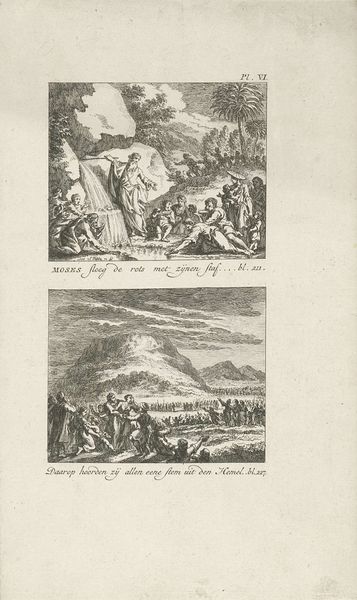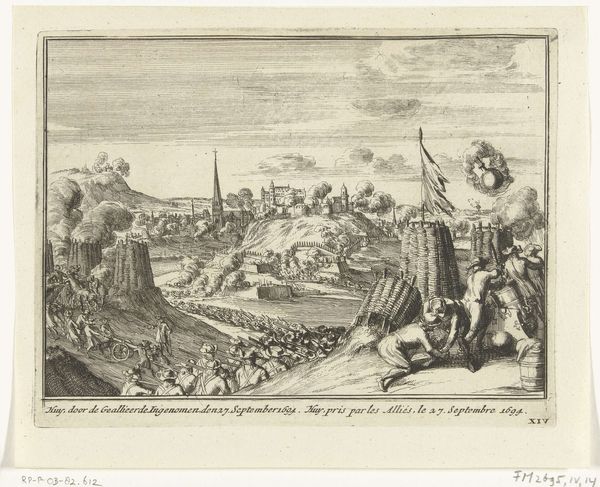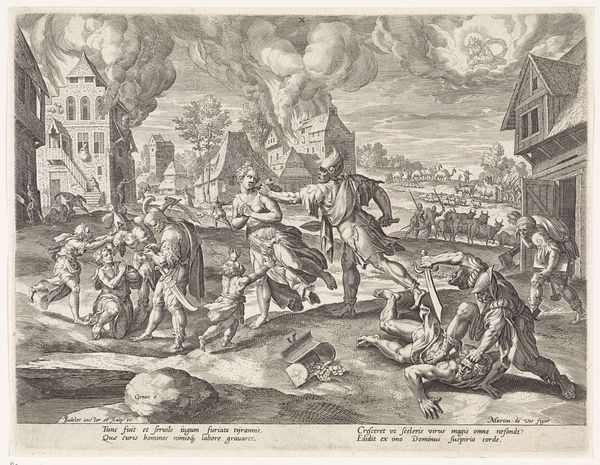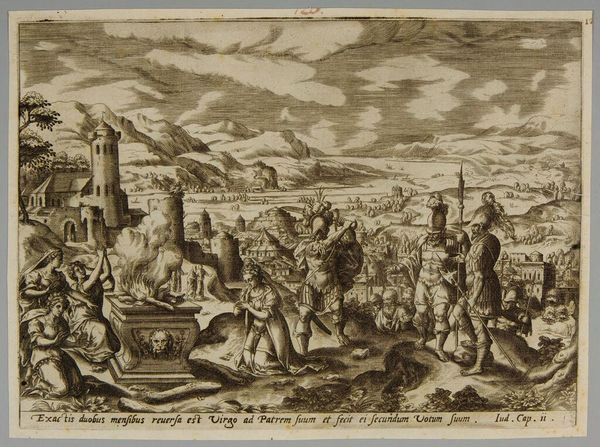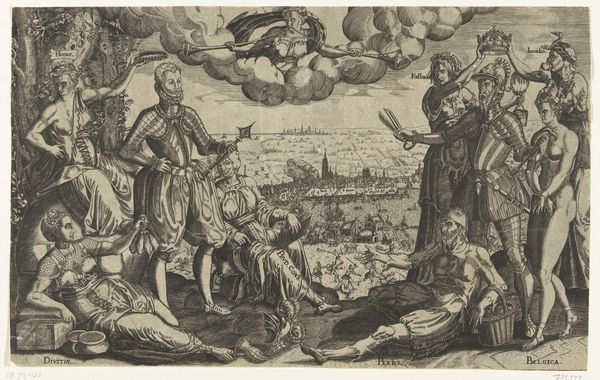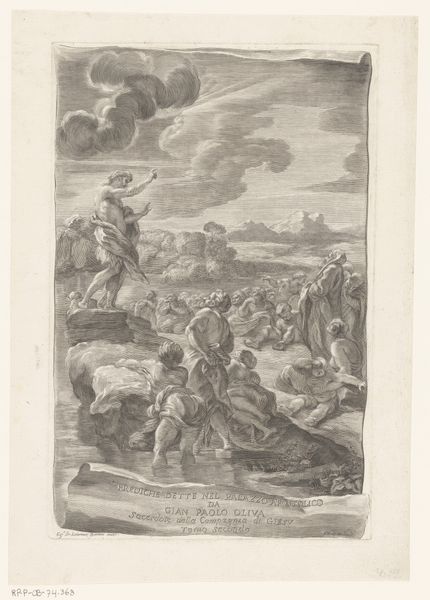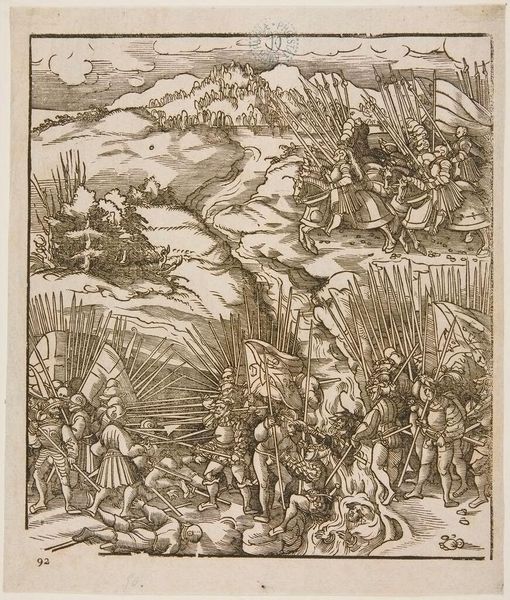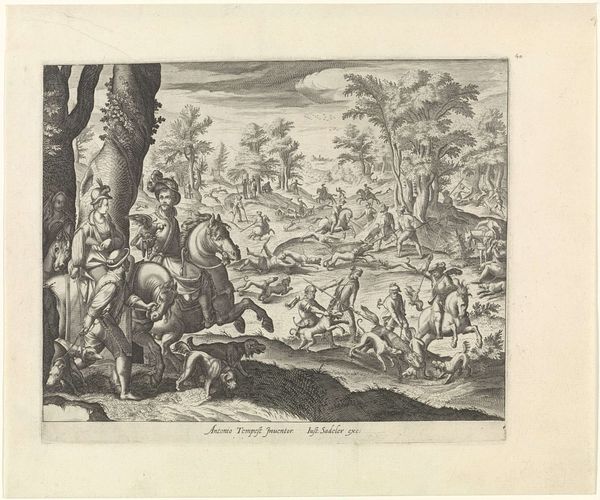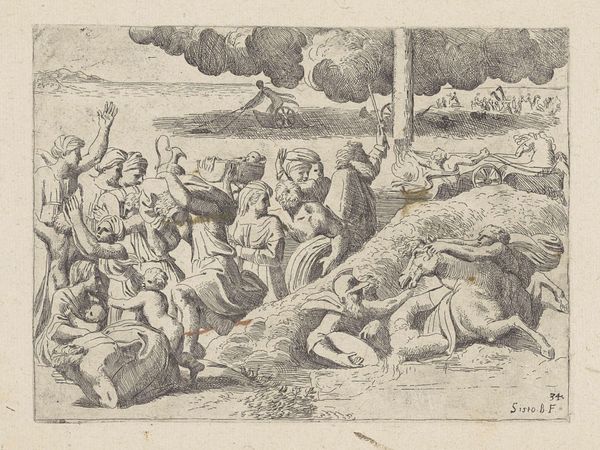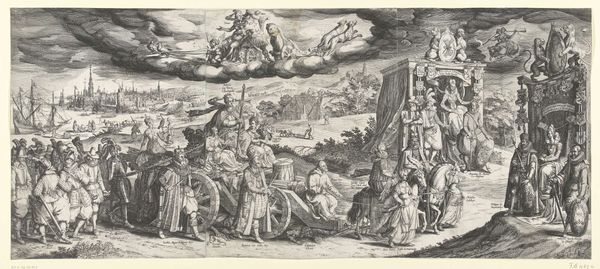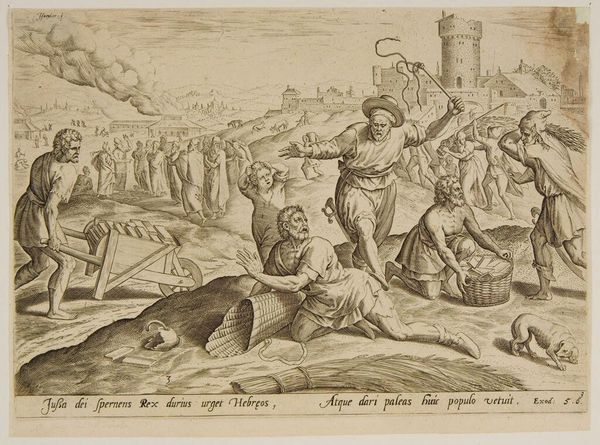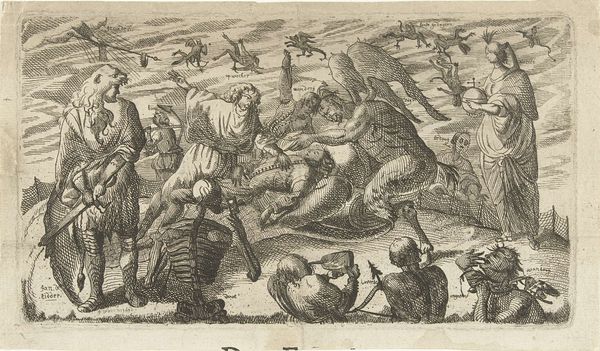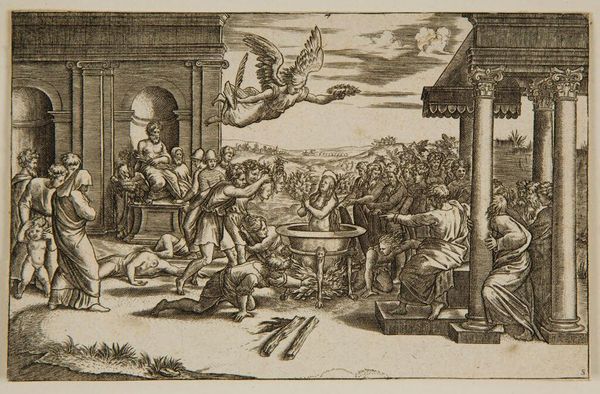
print, engraving
#
narrative-art
#
baroque
# print
#
old engraving style
#
landscape
#
figuration
#
line
#
history-painting
#
engraving
Dimensions: height 57 mm, width 141 mm
Copyright: Rijks Museum: Open Domain
Editor: This is Pieter Yver’s "Doortocht door de Rode Zee," or "Passage through the Red Sea," from 1743. It’s an engraving, and what strikes me is the sheer busyness of it, so many tiny figures rendered with such detail. How would you interpret this work? Curator: Considering the means of production helps to contextualize this piece. Engravings like this were relatively inexpensive and reproducible. Think about its intended audience – a rising merchant class eager for biblical narratives, perhaps. The labor involved in creating the matrix and pulling multiple prints speaks to the changing dynamics of art production. Editor: So you're saying the medium itself influenced the subject matter and accessibility? Curator: Precisely. The relatively low cost of engravings democratized art consumption. More people than ever before could "own" an image of this Exodus story. And notice how the landscape, rather than emphasizing divine intervention, emphasizes the sheer material challenge of such a journey, for both the Israelites *and* their pursuers? Editor: I see what you mean. The landscape feels very grounded and the human struggle dominates. Was the choice of engraving related to specific socio-economic concerns for artists at the time? Curator: Absolutely. Artists sought ways to participate in a growing market, moving away from solely relying on wealthy patrons. Reproducible prints allowed them to cater to a broader clientele, focusing on narrative themes with popular appeal. Think of it as an early form of mass media. It changed how artists perceived their roles as makers of art. Editor: It’s amazing to consider how the materiality and means of production reshaped not just the art itself, but also the art market and artistic identity. Thanks! Curator: My pleasure. It reveals so much about the context in which this artwork was not only made, but how it was consumed.
Comments
No comments
Be the first to comment and join the conversation on the ultimate creative platform.
